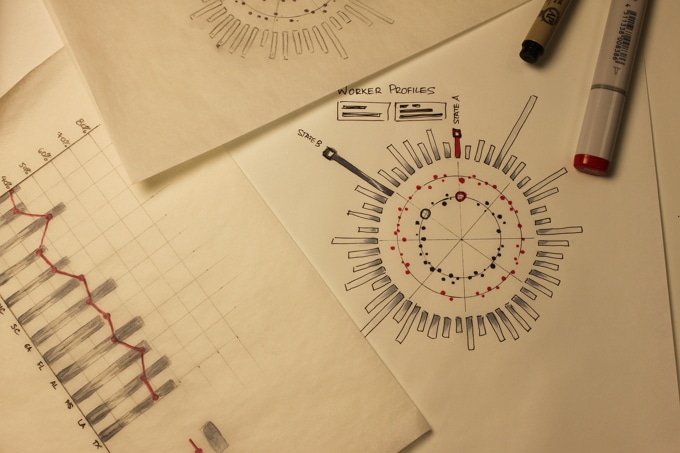
Let’s start with a conversation about basketball before we dive into data visualization. In 1993, at age 30 and after leading the Chicago Bulls to three consecutive NBA championships, Michael Jordan (typically referred to as the best player of all time) announced his retirement from basketball to pursue a career in professional baseball. That second career lasted less than two full seasons in the minor leagues, where one of the greatest athletes of all time struggled to even be called “average.” He eventually returned to basketball and led the Bulls to three more championships.
As amazing as he was, Jordan couldn’t transfer his ability into another “medium.” His years of honing his skills as a basketball player didn’t translate to baseball. His expertise in one sport did not automatically qualify him for success in another.
This same principle holds true for data visualization. Too often, marketers, CEOs, data analysts and more assume that a data visualization is just a graphic with some charts on it and treat the design process as the same. This leads to poorly created visualizations, lengthy revision cycles and generally a dissatisfaction with the final product.
Visual Communication through Data Visualization & Infographics Stand Apart from Graphic Design
A painting, a piece of prose, a dance, a powerful concerto, or a line of poetry: Each of these is a separate and distinct medium of expression. Each invokes different reactions and emotions. Each works differently, and demands its own degree of expertise.
It’s why Michael Jordan couldn’t hit a curve ball.
Data visualization isn’t just an extension of graphic arts. It’s a medium that demands specific expertise. You may have that person in-house, in the form of an information designer, but many companies need to look externally for this resource. But, even with the right designer, your job is only just beginning.
Good Visual Communication Design and Data Viz Start with Knowing Your Data Story
Data visualizations are a unique communication medium in that they tell a complex data story visually. It’s crucial, then, that your visual communication projects start with a story. You have some information you want to share with your audience and you want it to inspire some action from them. Knowing the final objective of the visualization is so important that an experienced information designer or visualization agency won’t even begin designing until this step is accomplished.
Finding that story can be difficult, especially when the impact of a data set isn’t clear. That’s where you can leverage additional resources to understand what your information actually means to people. Try these resources to help you interpret the story your data tells its target audience:
- Another Department in Your Company – other departments will bring their own perspective to the data and show you how it impacts the people they work with most often (prospects, existing clients, past clients, vendors, etc…)
- A Long-Standing Client – letting your trusted and long-standing clients look at your data and help you interpret what impact it has on them is a great way to get the general client perspective.
- An Experienced Data Visualization Agency – Data visualization agencies look at data every day and help companies tell the stories behind it. Use one as a resource to understand what your data can say.
After you’ve decided on the story you want to tell, take a moment to be sure that your data actually backs it up. If your data doesn’t correlate, you can either find a different story or collect other data. Either solution, in the long run, is better than trying to force a visualization to represent the data in a way it doesn’t fit.
Define the Audience for Your Visual Content
Storytelling 101 (and thus, Marketing 101) is “know your audience.” Because data visualizations tend to tell a complex story, the more you know about the target audience, the more powerful the data visualization will be.
By knowing your audience, you know how:
- Data should be gathered – Collecting the data that matters to the final audience the first time around saves time and money by avoiding costly re-gathering.
- Data should be set up for presentation – Knowing the expertise and experience of your audience allows you to know how complex the presentation can be (and how much background needs to be explained).
- The data visualization should be distributed – Getting your visualization in front of the right people means putting it where they’re already hanging out. Knowing your audience means that you know how to reach them.
A final piece of visual content like a data visualization or infographic is often a static image – and that has led people to believe it’s just another “graphic design project”.
Remember that visualization is its own communication medium, requiring a different level of expertise and different work before any lines are drawn. Get started right, and have the right members on your team, and you won’t be driving the lane when you should be swinging for the fences.
